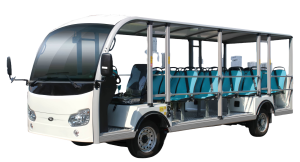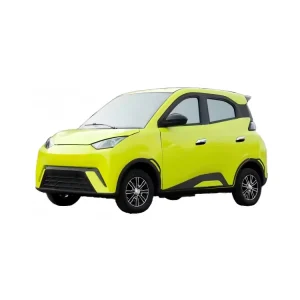Introducción
En los últimos años, la popularidad de vehículos eléctricos pequeños Ha aumentado, particularmente en comunidades residenciales, centros turísticos y campos de golf. Sin embargo, a menudo surge confusión con respecto a las distinciones entre carros de golf, Vehículos de baja velocidad (LSV)s), y Vehículos eléctricos del barrio (NEV)Este artículo tiene como objetivo aclarar estas diferencias, centrándose en su diseño, clasificaciones legales y tendencias del mercado.
Carros de golf
Definición y diseño
Originalmente diseñado para el transporte de golfistas y su equipo alrededor de campos de golf, carros de golf Son vehículos pequeños y motorizados. Por lo general tienen una velocidad máxima de 15-20 mph y pueden carecer de características de seguridad esenciales como cinturones de seguridad, faros y señales de giro.
Estatuto Legal
En muchas regiones, carros de golf No es legal en la calle. Por ejemplo, en Livonia, Michigan, operando una carrito de golf En carreteras públicas sin registro adecuado puede resultar en multas.

Vehículos de baja velocidad (LSV)
Definición y diseño
LSV son vehículos de cuatro ruedas con una velocidad máxima entre 20 y 25 mph. Están diseñados para cumplir con normas específicas de seguridad, incluyendo cinturones de seguridad, faros y señales de giro.
Estatuto Legal
En los Estados Unidos, LSV son legales en carreteras con límites de velocidad de 35 mph o menos, siempre y cuando cumplan con las normas de seguridad federales.
Tendencias del mercado
El norteamericano LSV El mercado experimenta un crecimiento significativo. En 2024, el mercado fue valorado en aproximadamente $ 4,17 mil millones y se proyecta que alcance $ 6,85 mil millones para 2030, creciendo a una tasa de crecimiento anual compuesta (CAGR) del 8,9%.

Vehículos eléctricos del barrio (NEV)
Definición y diseño
NEV son un subconjunto de LSVdiseñado específicamente como vehículos eléctricos de bateríaSe parecen a carros de golf pero están equipados con las características de seguridad necesarias y tienen una velocidad máxima de hasta 25 mph.
Estatuto Legal
NEV puede ser operado legalmente en la mayoría de las carreteras públicas donde el límite de velocidad publicado es de 35 mph o menos, sujeto a las regulaciones específicas del estado.
Tendencias del mercado
El global vehículo eléctrico de baja velocidad mercado, que incluye NEVSe prevé que crezca de $ 10.57 mil millones en 2025 a $ 36.52 mil millones para 2034, expandiéndose a una tasa de crecimiento anual anual del 14.81%.

🔍 Diferencias clave de un vistazo
| Características | Carro de golf | Vehículos de baja velocidad (LSV) | Vehículo eléctrico del barrio (NEV) |
| Velocidad máxima | 15–20 millas por hora | 20–25 millas por hora | Hasta 25 mph |
| Características de seguridad | Mínimo | Requeridos (cinturones de seguridad, luces) | Requerido (eléctrico, cero emisiones) |
| Legalidad callejera | Limitado o ninguno | Sí, con restricciones | Sí, con restricciones |
| Fuente de energía | Gasolina o eléctrica | eléctrico | eléctrico |
| Usos comunes | Campos de golf, senderos privados | Comunidades cerradas, resorts | Viajes urbanos de corta distancia |
Conclusión
Los vehículos eléctricos producidos por el Grupo Tairui puede satisfacer plenamente las necesidades de compra de los clientes. Comprender las distinciones entre carros de golf, LSVy NEV Es fundamental tanto para los consumidores como para los reguladores. A medida que la demanda de vehículos eléctricos pequeños continúa creciendo, mantenerse informado sobre sus clasificaciones legales y las tendencias del mercado garantizará un uso seguro e informado.
